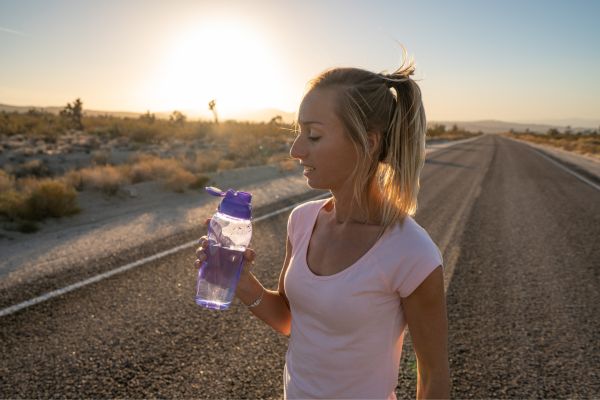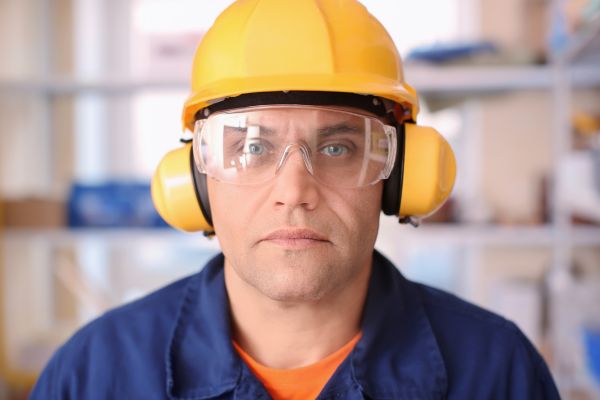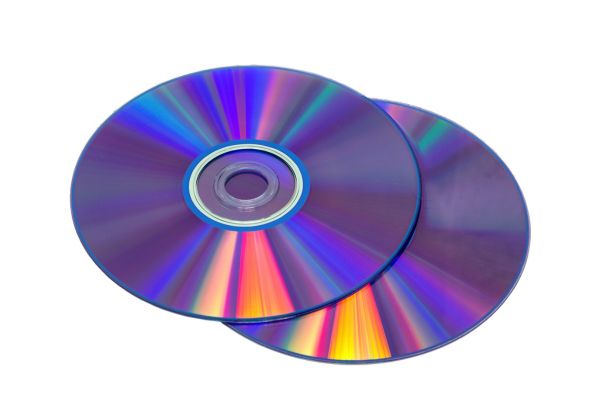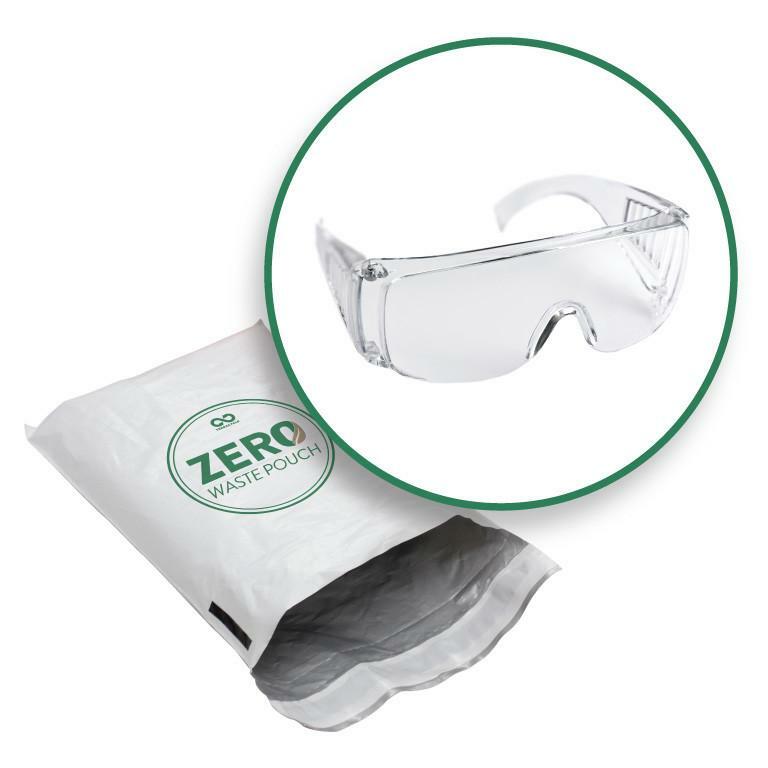Polycarbonate (PC) is a versatile and widely-used plastic known for its transparency, impact resistance, and heat resistance. From eyeglass lenses to CDs and medical devices, polycarbonate plays a pivotal role in various industries.
However, the increasing use of this plastic has raised concerns about its safety and environmental impact. In this article, we will delve into the intricacies of polycarbonate, exploring its production, properties, potential hazards, and sustainable alternatives.
What is Polycarbonate (PC)?
Polycarbonate is a transparent and lightweight thermoplastic that is known for its high impact resistance and clarity. It’s commonly used in a variety of applications such as eyeglass lenses, CDs, medical devices, and construction materials. Polycarbonate is favored for its durability, flexibility, and ability to withstand high temperatures, making it a preferred choice for many industrial and consumer products.
How is Polycarbonate Made?
Polycarbonate is synthesized through a chemical process known as polymerization, which involves the reaction of bisphenol A (BPA) and phosgene. The resulting polymer is then extruded and molded into various shapes and forms.
The manufacturing process of polycarbonate is complex and requires careful handling of the raw materials and precise control of the reaction conditions to produce a high-quality product.
What is BPA?
Bisphenol A (BPA) is a chemical compound that is commonly used in the production of polycarbonate plastics and epoxy resins. It was first synthesized in the late 19th century and has since become one of the most widely produced chemicals in the world.
BPA is derived from petroleum and is typically sourced from crude oil or natural gas. Due to its versatile properties, such as high heat resistance and durability, BPA is used in a variety of consumer products, including plastic bottles, food containers, medical devices, and thermal receipt paper. However, concerns about the potential health risks associated with BPA exposure have led to increased scrutiny and regulatory action in recent years.
Common Items made from Polycarbonate
Below is a list of common items made from polycarbonate, many of which you would be familiar with in your everyday life:
- Plastic bottles and containers
- Eyeglass lenses
- Safety goggles and protective eyewear
- Compact discs and DVDs
- Medical devices and equipment
- Electronic components
- Automotive parts
- Sports equipment such as helmets and protective gear
- Suitcases
- Greenhouses and roofing materials
- Kitchenware and utensils, including baby bottles and sippy cups
Please note that this is not an exhaustive list, as polycarbonate is used in a wide range of applications due to its strength, clarity, and heat resistance.






Why do we use Polycarbonate?
Polycarbonate is a popular plastic due to its exceptional strength, clarity, and heat resistance, making it suitable for a wide range of applications. It’s properties include:
-
- High Impact Resistance: Polycarbonate can withstand significant impact without breaking, making it ideal for safety goggles, helmets, and protective gear.
-
- Transparency: Polycarbonate offers excellent optical clarity, making it suitable for eyewear and optical lenses.
-
- Heat Resistance: With a high melting point, polycarbonate can withstand high temperatures without deforming, making it suitable for automotive parts and electrical components.
-
- Lightweight: Despite its strength, polycarbonate is lightweight, which is beneficial for applications where weight is a concern, such as in aerospace and automotive industries.
Polycarbonates are not without their controversies and concerns. One of the primary concerns associated with polycarbonate is the presence of Bisphenol A (BPA), a chemical compound used in the production of polycarbonate.
Environmental concerns of polycarbonate.
The production of polycarbonate involves the use of fossil fuels and chemical processes that contribute to environmental pollution and carbon emissions. Additionally, the disposal of polycarbonate products presents challenges due to their non-biodegradable nature and potential for leaching harmful chemicals into the environment.
Leaching into the Environment
One of the primary concerns with BPA is its ability to leach from products into the surrounding environment, particularly when these products are exposed to heat, wear, or degradation. This leaching process can occur at all stages of a product’s life cycle, from production to disposal.
Once BPA enters the environment, it can have detrimental effects on aquatic ecosystems.
- The Stats: Research has indicated that BPA can disrupt the endocrine systems of aquatic organisms, affecting their reproductive capabilities and overall health (Source: Environmental Science & Technology Journal).
- BPA Contamination: Research from the National Oceanic and Atmospheric Administration (NOAA) has found that BPA is one of the most common chemicals found in the ocean, impacting marine life and potentially posing risks to human health.
Bioaccumulation and Biomagnification
BPA does not break down easily in the environment, leading to its accumulation in soil and water over time.
- The Stats: Studies have found BPA concentrations in various environmental samples, including soil and water, indicating its pervasive presence and potential for long-term environmental impact (Source: Environmental Pollution Journal).
Contamination of Food Chain
As BPA leaches into the environment and accumulates in water and soil, it can enter the food chain, posing risks to animals and, ultimately, humans.
- The Stats: A study by the National Institute of Environmental Health Sciences found evidence of BPA in a variety of wildlife species, highlighting its potential to biomagnify and impact higher trophic levels in the food chain.
The environmental impacts of BPA in polycarbonate plastics are a serious concern. As consumers, businesses, and policymakers, we are responsible for addressing these issues through sustainable practices, stricter regulations, and the promotion of alternative materials that are less harmful to our environment.
Health Concerns related to Polycarbonate and BPA
Bisphenol A, commonly known as BPA, has become a topic of concern in recent years, and for a good reason. This chemical is used in the production of polycarbonate plastics and epoxy resins, making its way into a variety of everyday items, from water bottles to the linings of food cans. But what are the health implications of BPA exposure, and why should consumers be concerned?
BPA is an industrial chemical that has been used since the 1960s in the manufacturing of certain plastics and resins. When it comes to polycarbonate plastics, BPA is a key component, providing the material with its strong and clear properties. According to the Centers for Disease Control and Prevention (CDC), nearly all of us have BPA in our bodies, with trace amounts detected in the urine of 93% of Americans tested. This widespread exposure is due to the leaching of BPA from containers into the food and beverages we consume.
The health risks associated with BPA exposure have been the subject of much debate and controversy within the scientific community. While some studies have linked BPA exposure to a range of health issues, including reproductive disorders, developmental problems, and certain types of cancer, others have found no significant health effects at typical exposure levels.
For instance, a study published in the Journal of the American Medical Association (JAMA) found that higher urinary BPA concentrations were associated with an increased risk of cardiovascular diseases. On the other hand, a report by the European Food Safety Authority (EFSA) concluded that current levels of BPA exposure are not a health risk for the general population, but they did acknowledge potential risks for certain vulnerable groups, such as infants.
However, due to the growing concerns over BPA’s potential health risks, several countries have taken regulatory actions to limit its use in consumer products. For instance:
- European Union: BPA has been banned in baby bottles since 2011.
- Canada: BPA was declared a toxic substance in 2010, leading to its removal from baby bottles and sippy cups.
- United States: While the FDA has not banned BPA, it has taken steps to reduce exposure and supports industry actions to stop producing BPA-containing baby bottles and infant feeding cups.
Despite these regulatory actions, BPA is still widely used in various consumer products, emphasizing the importance of consumer awareness and informed decision-making.
While the scientific community continues to debate the exact health implications of BPA exposure, there is enough evidence to warrant caution, especially for vulnerable populations like infants and pregnant women. As consumers, being informed about the potential risks of BPA and taking proactive steps to reduce exposure can help protect our health and well-being.
How can you avoid or reduce polycarbonate use?
Here’s a list of steps you can take to avoid using polycarbonate products:
-
Check Product Labels: Look for products labeled as BPA-free or specifically state the type of plastic used.
-
Choose Alternatives: Opt for products made from alternative materials such as stainless steel, glass, or polyethylene.
-
Research Brands: Prioritize brands that are transparent about the materials they use and avoid those known to use polycarbonate.
-
Avoid Microwaving Plastic: Refrain from microwaving food in plastic containers, as polycarbonate can leach BPA when heated.
-
Use Glass or Stainless Steel Containers: Instead of using plastic water bottles or food storage containers, choose glass or stainless steel options.
-
Check Baby Products: For baby bottles and sippy cups, choose ones labeled as BPA-free or made from safer materials.
-
Avoid Canned Foods: Some canned foods have linings containing BPA. Look for cans labeled as BPA-free or opt for fresh or frozen alternatives.
-
Read Plastics Recycling Codes: Polycarbonate is often labeled with recycling code “7,” but this code is also used for other plastics. When in doubt, choose products with a recycling code indicating a safer plastic, like “1,” “2,” or “5.”
-
Support Legislation: Advocate for stricter regulations on the use of polycarbonate and other potentially harmful plastics.
-
Educate Others: Share your knowledge with friends and family to raise awareness about the potential risks of polycarbonate and encourage others to make informed choices.

Looking for a better option when it comes to luggage? Choosing Solgaard suitcases is a great sustainable choice. Made from recycled materials, including recycled polyester and polycarbonate their suitcases not only offer durability and style but also help reduce environmental impact.
With Solgaard, you’re not just buying a suitcase; you’re making a responsible choice for our planet.
Can Polycarbonates be recycled?
Yes but only through specialist recycling services.
While polycarbonate is technically recyclable, most curbside recycling programs do not commonly accept it. Due to its specific properties and the need for specialized recycling processes, many local recycling facilities lack the capabilities to effectively process and recycle polycarbonate.
However, specialized recycling facilities can process polycarbonate products and recover the raw materials for reuse in new products.
It’s essential to check with local recycling centers or specialized recycling programs that can handle polycarbonate to ensure proper recycling.
Below are some specialist recycling services available.
The Protective Eyewear – Zero Waste Pouch from TerraCycle is a great way to dispose of your scratched and broken safety glasses to ensure they get recycled. If you have more than a few you can also check out their zero waste box.
Better still why not try TerraCycle’s All-In-One – Zero Waste Box.
Final Thoughts
Understanding that polycarbonate is a type of plastic and familiarizing oneself with various plastics is crucial for making informed decisions in daily life. Plastics come in many forms, each with its own set of properties, benefits, and potential risks.
Polycarbonate is a versatile and widely used plastic with unique properties that make it suitable for various applications. However, its health and environmental concerns are an issue.
By learning about different plastics, including polycarbonate, you can better assess the safety, durability, and environmental impact of products they you purchase.
This knowledge empowers consumers to make choices that align with their values and priorities, whether it be opting for more sustainable materials, reducing exposure to potentially harmful chemicals like BPA found in some plastics, or supporting products that are recyclable or biodegradable.
Additional Resources
Recommended readings, studies, and resources for readers interested in learning more about polycarbonate and BPA.
-
Centers for Disease Control and Prevention. “Biomonitoring Summary: Bisphenol A.” CDC, 2021.
-
Melzer, D., et al. “Association of Urinary Bisphenol A Concentration with Heart Disease: Evidence from NHANES 2003/06.” Journal of the American Medical Association, 2010.
-
European Food Safety Authority. “EFSA updates advice on bisphenol A: No consumer health risk from bisphenol A exposure.” EFSA, 2015.
-
European Commission. “Bisphenol A (BPA) – Restrictions.” European Commission, 2011.
-
Government of Canada. “Bisphenol A (BPA) – Overview.” Government of Canada, 2010.
-
U.S. Food & Drug Administration. “Bisphenol A (BPA): Use in Food Contact Application.” FDA, 2020.
















